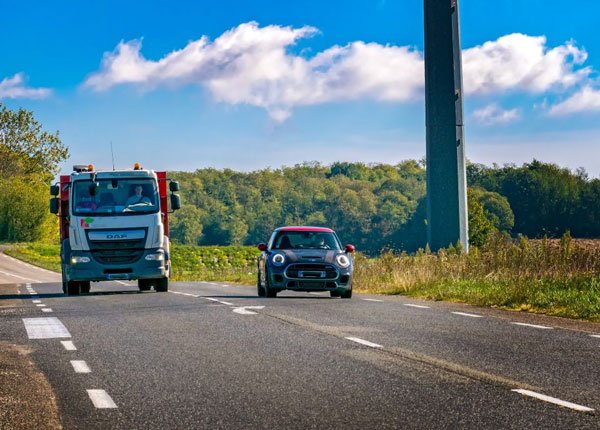
Right-of-Way Rules for School Buses: Laws, Penalties and Exceptions
Updated Oct. 20, 2020Each year around the United States, more than 100 children are killed in school zone collisions. That figure is significantly greater when we include children killed as a result of any collision involving a school bus and at least one other vehicle. Motorists have a responsibility to drive cautiously around school buses, whether the school bus has stopped by the roadside or is moving. The law in most states requires drivers to stop for stopped school buses which are displaying a “STOP” arm or flashing lights. We discuss this essential right-of-way rule on this page.
Whenever you are driving in a school zone or near a school bus, you must keep speed to a minimum, pay attention to the roadway and be prepared to yield the right-of-way.
School bus right-of-way laws
The traffic laws in most states stipulate that all motorists must stop for any stopped school bus transporting children – this applies to vehicles traveling in both directions (unless traveling on the other side of a divided highway, as discussed in the next section). This law usually includes a minimum safe distance away from the school bus you must stop. For example:
- In Pennsylvania, drivers must stop at least 10 feet away.
- In Colorado, drivers must stop at least 20 feet away.
- In New Jersey, drivers must stop at least 25 feet away.
The penalties for violating this right-of-way law are strict, so be sure to check out the required stopping distance in your state using the official driver’s handbook.
School buses generally feature warning devices to let other motorists know when they may not pass. When a moving school bus displays flashing yellow lights, this usually means they are preparing to stop to load or unload children. Slow down and be prepared to stop if you see a school bus displaying this signal.
To attract attention, most school buses display flashing amber or red lights, or a lowered “STOP” arm when stopped. You must stop your vehicle at the minimum required distance when approaching a school bus using these warning devices. Remain stopped until the warning devices are deactivated and continue to yield the right-of-way, by allowing the school bus to pull off first. While still stopped, the school bus may obscure children who are waiting to cross the street.
Right-of-way on divided highways
The right-of-way laws in most states do not require drivers to stop for a stopped school bus, if they are traveling along the opposite side of a divided highway. Divided highways separate opposing lanes of traffic with a central barrier or raised median.
You must look for locally relevant information on this right-of-way rule in your state’s own handbook, as there are some exceptions. Presently, drivers in New York, Mississippi and West Virginia are required to stop, even when moving in the opposite direction on a divided highway. In Arkansas, motorists must stop if the central barrier or median is less than 20 feet wide.
It is not necessary to stop for a stopped school bus in any state, when traveling on the opposite side of a controlled-access road where pedestrians are not permitted to cross.
School bus right-of-way violations
Your state’s driving manual will list the penalties which may be incurred by violating school bus right-of-way rules. Depending on the number of times an offense has been committed and whether any injury was caused, drivers failing to stop for a stopped school bus may be subject to one or all the below penalties:
- 1

A fine
- 2

Points added to their driving record
- 3

License suspension
You can learn more about the penalties incurred by failing to stop for a school bus in the “Sharing the Road with Buses” article.




